Introduction to the culture of yellow mud turtle
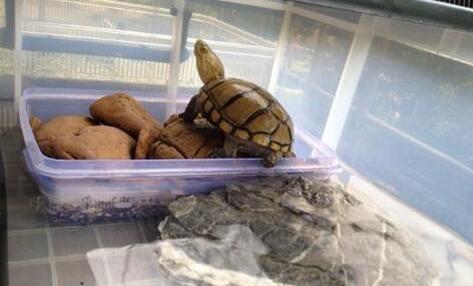
1. Brief introduction of yellow mud turtle species.
Yellow mud turtle, also known as yellow mud turtle, yellow mud egg turtle, is one of the common species of egg turtles. The back nail is yellow, the nail piece is large and flat, and there is a black edge between the nail piece and the nail piece, which looks very good. The yellow mud turtle is a semi-aquatic turtle, but it prefers to stay in the water, likes to eat some meat, and has a single diet.
Chinese scientific name: yellow mud turtle
Alias: yellow mud egg turtle
English name: Yellow Mud Turtle
Binary name method: Kinosternon fiavescens
Kingdom: animal kingdom
Phylum: phylum Chordata
Subphylum: vertebrate subphylum
Class: reptiles
Item: turtles and turtles
Family: tortoise family
Species: yellow mud turtle
Distribution: northern Nebraska to Texas, eastern and southern New Mexico to Asia, southeastern Arizona to Mexico. There are isolated communities on the edge of Illinois and Iowa.
Mode of reproduction: laying eggs. In New Mexico, they lay eggs in June. The young turtles reached sexual maturity after 6 ~ 7 years.
Habits: like a body of fresh water that is quiet and slow, with mud or sand at the bottom. In colder months, the turtles hide under bushes or fallen leaves, in tree holes, in muskrat nests, or buried in mud under water. Generally speaking, they are very shy and usually have no attempt to bite.
Body features: the body length is 9mm 16.2 cm, the back armor is olive to dark brown, smooth and angularly, usually flattened; the shield has a black edge.
Feeding habits: feed on worms, arthropods, snails and tadpoles.
Habitat: semi-aquatic turtles, but partial aquatic.
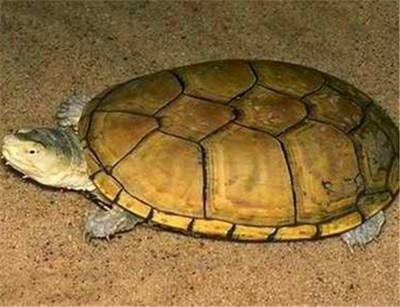
2. Morphological characteristics of yellow mud turtle.
The yellow mud turtle is one of the egg turtle species, so the back nail looks like an oval, no edge and no markings, like a smooth pebble. The identification of yellow mud turtles is also easy. Adult yellow mud turtles are one of the larger species of egg turtles.
1. Morphological characteristics of yellow mud turtles.
The head is of moderate size, and the adult male has a protruding nose and mouth and a hooked upper jaw, compared with the hooked outline of the female upper jaw. The color of the head is usually yellow or light gray, the color of the throat ranges from pale to yellow with small papillary sarcomas, perhaps with small black spots, a pair of tentacles on the chin, and other skin colors from yellow to gray. The color of the lower jaw, throat and limbs tends to be lighter.
Second, the size of the back armor of the yellow mud turtle
The yellow mud turtle is the second smallest water tortoise in Iowa, only larger than the musk turtle. The body length of newly hatched turtle seedlings is smaller than that of 2.5cm. There are yellow spots on the edge of the carapace and no vertebrae close up. The adult toenail is about as long as 13cm. The back nail is dark and without markings, and the upper part is extremely flat and oval in shape. Abdominal armour has a great development than small smelly eggs: there are several lines on the yellowish background, without any size spots, and the chest shield, abdominal shield and femoral shield are connected by two ligaments.
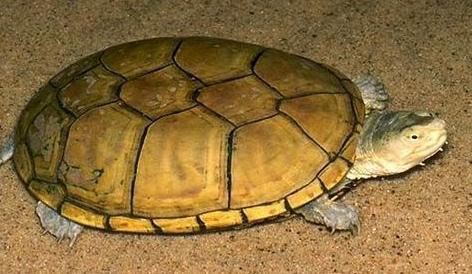
3. Nursing knowledge of yellow mud turtle
It is not difficult to raise yellow mud turtles, but many people wonder why the appearance of adults is so different from that of raising yellow mud turtles.
1. Habits of wild yellow mud turtles
Yellow mud turtles rest for most of the year, and when there is a significant change in the climate, they look for natural hiding places, such as tree stumps, the bottom of bushes, dry leaves and under logs. Others hide in caves and bury themselves with sand, especially during hibernation and summer hibernation. One of the factors for returning to active state is the influence of warm Rain Water (Rain Water irrigated dry ponds or streams). Sometimes they migrate long distances to find water.
2. Breeding of yellow mud turtles
During the mating season, the tearing between male turtles is very serious and often leads to disability. At the same time, in the process of mating, the male tortoise is also very rough and often bites the female tortoise to force her to submit. In such cases, the fight between them can be avoided by controlling the ratio of male to female. A more reasonable male-female ratio should be 1:2 or 1:3. At the same time, in order to put an end to excessive mating, male and female are raised in the same tank only during estrus.
Matters needing attention in raising egg turtles
The water quality of raising yellow mud turtles is better, it will show better body color, and make the radiation lines of egg turtles with radiation lines clearer. The yellow mud turtle is a turtle that needs sunlight very much. it can be moisturized by the sun, which can make its body color brighter and better absorbed. Try to choose white or beige in the container, which is completely opaque. Because the egg turtle is a kind of turtle that is good at adapting to the surrounding environment and changing body color. At the same time, we need to maintain the diversity of food. Don't be single. Shrimp is one of the better and recommended foods.
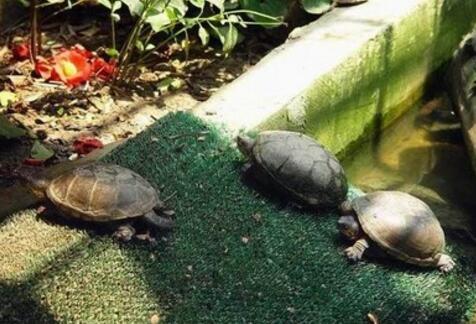
4. The living environment of yellow mud turtles
The quality of the living environment of the yellow mud turtle is not only related to its health, but more importantly, it will affect its appearance. Some reasonable environments can help the yellow mud turtle's back armour become more shiny, just like human beauty. Yellow mud turtles also need special care.
I. the wild environment and living condition of the yellow mud turtle.
Yellow mud turtles live in swamps, streams, ponds, lakes, reservoirs, semi-arid grasslands, open woodlands, and surrounded by sand dunes. The pond with sediment as the bottom layer, and rich aquatic plants are what it likes.
Yellow mud turtles are widely distributed and still maintain a high density, so there is no great threat except for humans. There are still a number of groups in other areas, northwest Nebraska, southeastern Iowa and southeastern Illinois.
Second, the artificial breeding environment of yellow mud turtles
The size of the turtle feeding tank is 100 * 50 * wide and 50 * high. As the yellow mud turtle is a kind of tortoise that likes to bask in the sun, it is best to design a platform for it to bask in its back. The ratio of land to water in the feeding tank is controlled at 1:2. Relatively speaking, the yellow mud turtle does not like high temperature very much, it has the habit of hibernating in summer, and the general water temperature is more suitable at 25 degrees. So players who raise yellow mud turtles in the south must pay attention to this! In the process of raising yellow mud turtles, you will find that yellow mud turtles are a kind of turtles that are good at adapting to the surrounding environment and changing body color. According to this characteristic, it is recommended that we use white containers to raise CB individuals, which will make its body color more gorgeous.
5. Main points of raising yellow mud turtles
There are many food choices for yellow mud turtles. In wild environments, yellow mud turtles tend to eat some meat. They will catch some insects and molluscs. In an artificial breeding environment, people tend to change the color of their back armour through food to make it more colorful.
First, the eating habits of yellow mud turtles
Yellow mud turtles are carnivores, including insects, molluscs, crustaceans, amphibians, annelids, nematodes, leeches, flatworms, centipedes, spiders, aquatic plants, and carrion. Yellow mud turtles with less than 5 cm of toenail length mainly feed on small aquatic insects, algae, carrion and dead fish. For those who are more than 5 centimeters, their food is diverse. Yellow mud turtles usually look for food at the bottom of the riverbed, but sometimes they also hunt on the bank and on the water. A keen sense of smell can help them find food easily under water.
Second, what is the color of the back armor of the yellow mud turtle?
If you want the yellow mud turtle to have a brighter back armor, you must have a constant intake of pigment. many people will choose shrimp because shrimp contains astaxanthin, which will slowly accumulate in the tortoise, and then show on the pattern and skin of the tortoise. some patterns are slowly reversed as the turtle grows up, so this is a long-term process, so don't rush for success. If you only feed shrimp blindly in pursuit of color, it will only cause health problems for yellow mud turtles.
For more information, please follow Wechat: shouguiwang
- Prev
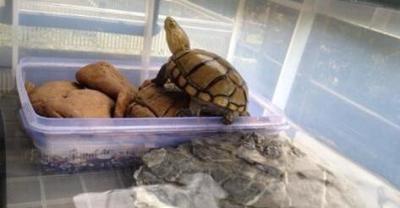
Knowledge | Culture methods of geraniums
Geranium likes warm climate and fertile loose soil, is resistant to drought and waterlogging, grows poorly in hot summer and high temperature, and is in a semi-dormant state. Today Huahua will teach you something.
- Next
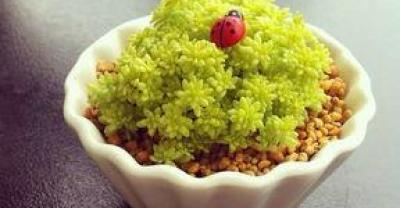
The cultivation methods and matters needing attention of the money tree, how to raise the money tree to blossom before the minimum temperature requirement of the money tree?
The money tree gets its name because its leaves are like strings of coins. Native to Africa, the plant is as high as 50-80 cm. It is a popular indoor foliage plant.
Related
- On the eggshell is a badge full of pride. British Poultry Egg Market and Consumer observation
- British study: 72% of Britons are willing to buy native eggs raised by insects
- Guidelines for friendly egg production revised the increase of space in chicken sheds can not be forced to change feathers and lay eggs.
- Risk of delay in customs clearance Australia suspends lobster exports to China
- Pig semen-the Vector of virus Transmission (4)
- Pig semen-the Vector of virus Transmission (3)
- Five common causes of difficult control of classical swine fever in clinic and their countermeasures
- Foot-and-mouth disease is the most effective way to prevent it!
- PED is the number one killer of piglets and has to be guarded against in autumn and winter.
- What is "yellow fat pig"? Have you ever heard the pig collector talk about "yellow fat pig"?

